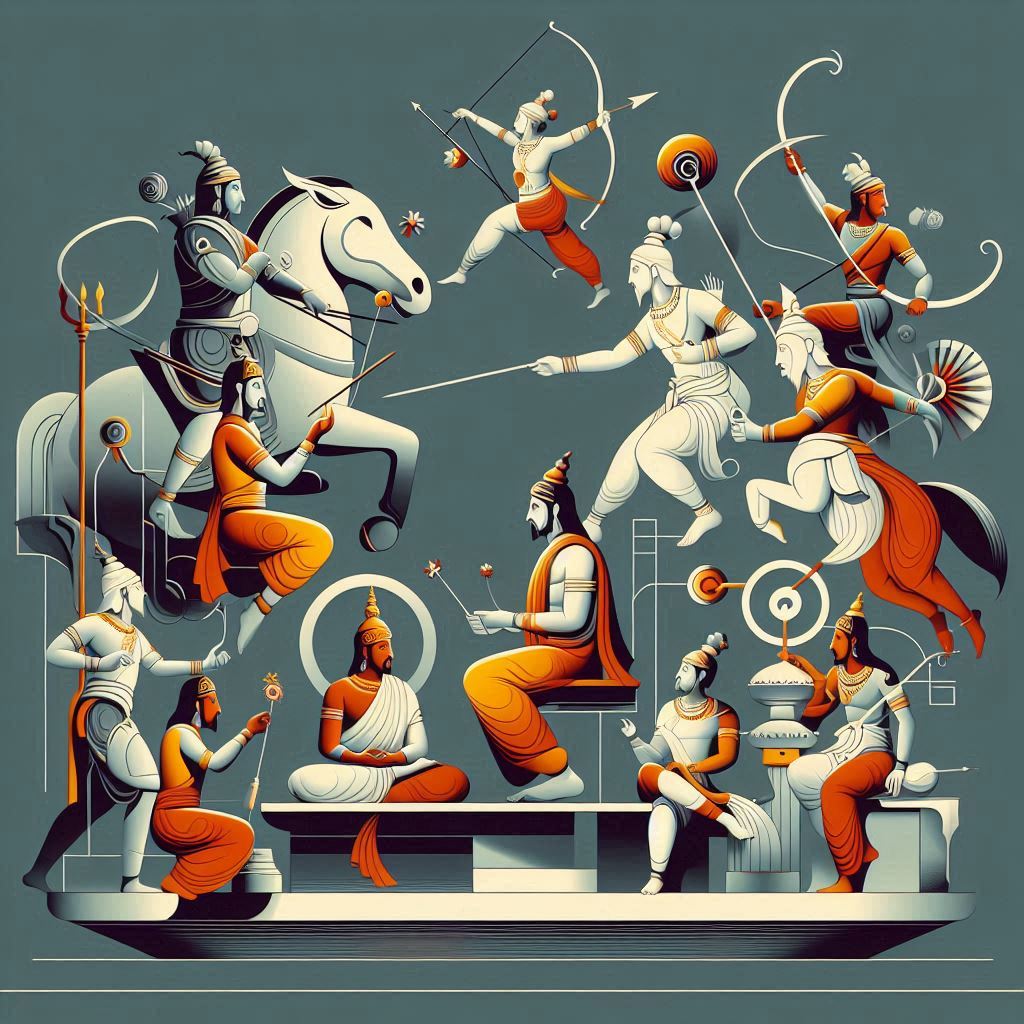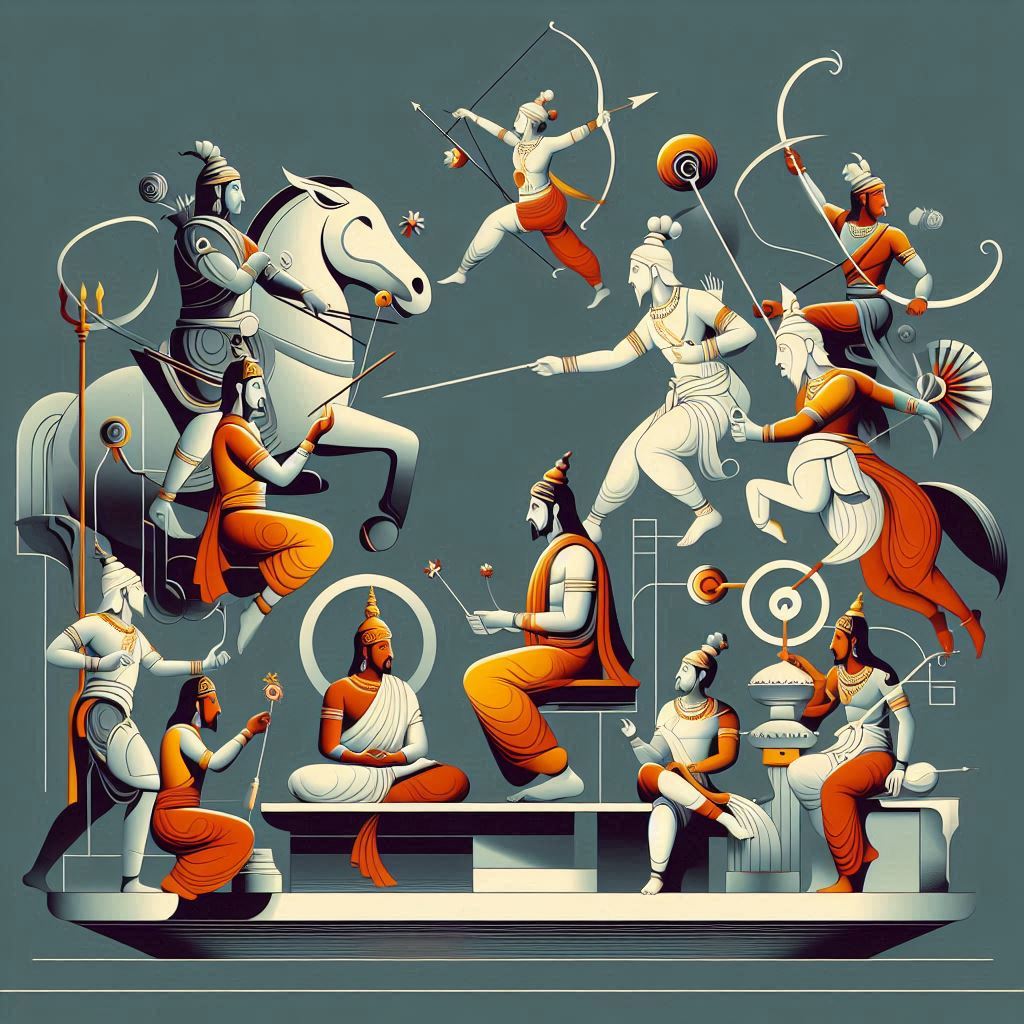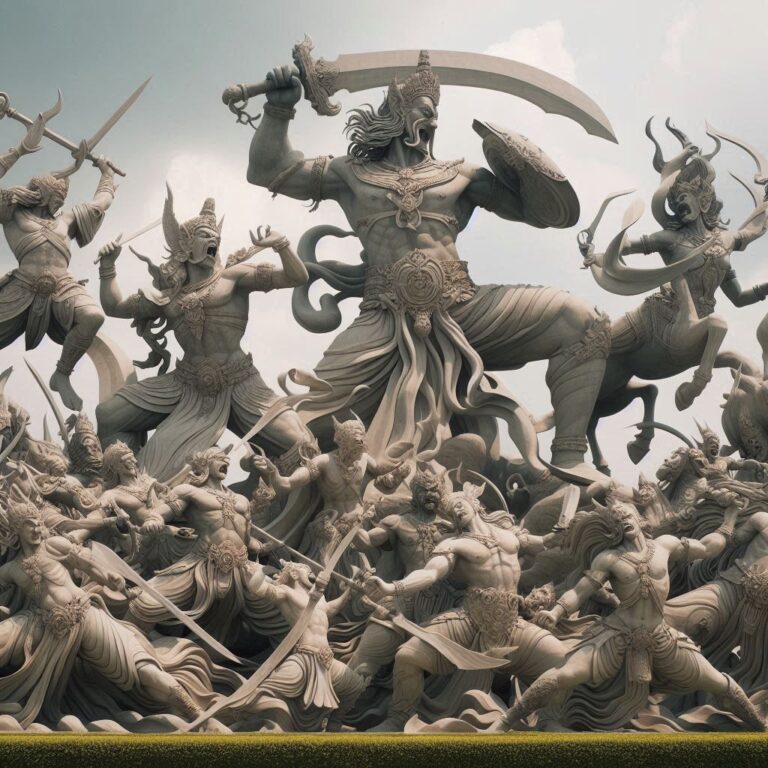Exploring Diverse Academic Perspectives on Ramayana Interpretations
Exploring Academic Perspectives on the Ramayana
The Ramayana—that epic tale of love, duty, and the eternal battle between good and evil—has been woven deeply into the tapestry of Indian culture and spirituality. But wait, before you go on thinking it’s just a rendition of a classic story, hold on! The Ramayana is not merely a narrative; it’s a treasure trove of academic thought and interpretations that have fascinated scholars for centuries. So, let’s dive in and unravel some fascinating academic perspectives on this iconic text!
The Diversity of Interpretations
When you pick up the Ramayana, you’re not just holding a storybook; you’re holding a diverse universe of interpretations. Imagine a kaleidoscope where each turn offers a different view—this is what happens with the Ramayana. Its themes, characters, and morals have inspired myriad interpretations across cultures, languages, and academic disciplines.
Historical Context
First off, understanding the context in which the Ramayana was written is crucial. Scholars often assert that it was composed around 500 BCE to 100 BCE, although some parts may predate this. The text is attributed to the sage Valmiki, often referred to as the “Adi Kavi” or the “First Poet.” It narrates the life of Lord Rama, his unwavering commitment to dharma (righteousness), and the trials faced by him and his loved ones.
But have you ever wondered how these ancient verses have continued to resonate with modern audiences? This connection is primarily due to the broad spectrum of intellectual frameworks applied to the text, ranging from philosophical and feminist to psychological interpretations.
Philosophical Interpretations
Philosophers, particularly from Indian traditions, have used the Ramayana to explore existential questions. Let’s ponder this for a moment: what is dharma? Is it absolute or context-dependent?
In the Ramayana, different characters exhibit varying understandings of dharma. Consider the character of Rama, whose sense of duty often comes at great personal cost. The moral dilemmas faced by him bring forth the complexities of ethical behavior, a topic still relevant in today’s debates on morality.
Shloka Insight
One famous shloka puts this into perspective:
धर्मपत्नी च रघुवीरतिर्वेदिता सदा।
धर्मस्य पत्युः वचनं न विचार्य समर्थः॥
Dharmapatnī ca Raghuvīratīr vedita sadā।
Dharmasya patyuḥ vacanaṃ na vicārya samarthaḥ।
Translation: The wife of the Raghus always knows her duty; one who does not contemplate the words of duty is never competent.
This encapsulates the complex nature of duty as represented in the Ramayana. It shows how dharma is not a straightforward path; it twists and turns just like our life choices.
Feminist Perspectives
Now, let’s shift gears and talk feminism. Did you know the Ramayana has also been examined extensively through a feminist lens? This might come as a surprise to some, but the roles of women in this epic are brimming with discussions on agency and autonomy.
Take Sita for instance—often portrayed as the epitome of virtue but also critiqued for her perceived submission. Scholars like Uma Chakravarti suggest Sita’s character can be viewed as a woman bound by societal norms but also as a symbol of resilience.
Another Thought-Provoking Shloka
कान्तारं दृष्ट्वा माता दारिः शून्यं श्रिंजयेत्
कान्तारामि प्राणदण्डो यथेष्टं न चेदपि॥
Kāntāraṃ dṛṣṭvā mātā dāriḥ śūnyaṃ śriṃjayet।
Kāntārāmi prāṇadaṇḍo yatheṣṭaṃ na cedapi।
Translation: A mother sees her son empty in her heart; if he neglects his duty, she grieves.
This highlights the pain mothers endure, which resonates with Sita’s narrative, ultimately depicting her sacrifices.
Psychological Interpretations
Turning our attention to psychology, the Ramayana opens up fascinating avenues of discussion about human emotions, relationships, and mental well-being.
The character of Ravana is often analyzed from a psychological standpoint. He is not simply the villain; rather, he embodies complex traits—his hubris, desire, and grief make him a compelling figure. Some scholars propose that Ravana symbolizes unchecked ambition and the human tendency to deviate from dharma, serving as a cautionary tale in psychological contexts.
A Doha to Reflect Upon
कष्टा सूखानि न भवे।
धर्मो गच्छति देहिनाम्।
वरीयतां दयालुं च।
सार्वभौमेश्वरस्य यथा॥
Kaṣṭā sūkhāni na bhave।
Dharmo gacchati dehinām।
Variyatāṃ dayāluṃ ca।
Sārvaibhau meśvarasya yathā।
Translation: For a being, suffering and happiness come and go; Dharma is what remains evermore, renowned as the compassionate one in every realm.
This doha embodies the layered nature of emotion present in the Ramayana, transcending time and space.
Cultural Interpretations
In addition to philosophical and feminist perspectives, the Ramayana has functioned as a cultural compass. Many communities use this narrative to shape their socio-political landscapes.
Take the iconic character of Hanuman, for instance. Beyond being a devoted disciple, he has evolved into a symbol of strength and loyalty across different cultures, from Southeast Asia to the Western world. His depiction often serves as a reminder to overcome adversity, making him an enduring figure in pop culture and literature.
Contemporary Relevance
What’s fascinating is that the Ramayana isn’t just a relic of the past; it still holds significant contemporary relevance. Scholars analyze its themes in light of modern societal issues, such as gender roles, ethics in politics, and communal harmony. It sparks crucial conversations, making its interpretations as vibrant as ever.
So, how do we continuously bring these traditions into discussions today? We can take lessons from the Ramayana concerning compassion, duty, and understanding the grey areas present in human interactions. It urges us to reflect on our own lives—do we hold onto our dharma despite facing life’s storms?
Conclusion
In the vast ocean of academic interpretations surrounding the Ramayana, we find both depth and breadth covering an array of themes—from duty to feminism, from emotion to culture. As we equip ourselves with these insights, they help us navigate our intricate world, providing tools through which we can comprehend our roles within society. The real beauty of the Ramayana unfolds not just in its lines but in our capacity to reflect on its teachings throughout various dimensions.
In a nutshell, whether you see it through a philosophical lens or a cultural one, the Ramayana continues to be more than just an epic. It remains a living narrative that invites everyone to engage, reflect, and learn.
FAQs:
-
What is the main theme of the Ramayana?
The main themes revolve around dharma (duty), righteousness, love, and the eternal conflict between good and evil. -
Who wrote the Ramayana?
The epic was written by the sage Valmiki, who is often celebrated as the Adi Kavi (first poet) of Sanskrit literature. -
How is Sita portrayed in the Ramayana?
Sita is portrayed as the embodiment of virtue and loyalty, yet her character is analyzed for her agency and the sacrifices she makes throughout her journey.
-
What do modern scholars say about Ravana?
Scholars often discuss Ravana as a complex character who embodies traits of ambition and ego, serving as both a villain and a cautionary figure. -
How do themes from the Ramayana apply to contemporary society?
These themes resonate in discussions of morality, political ethics, and social responsibilities, making the Ramayana relevant for modern audiences.








